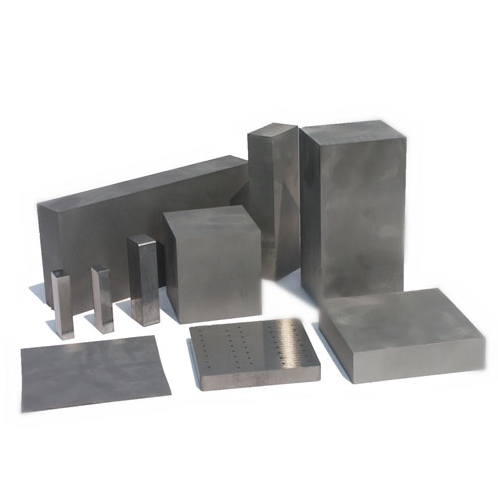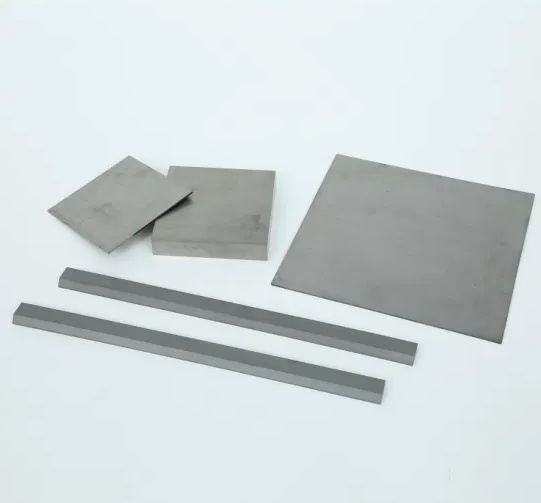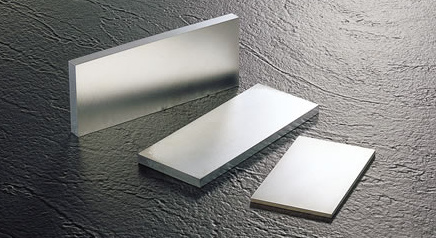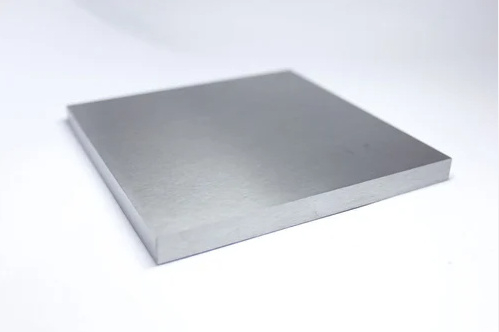Vue d'ensemble Plaquettes en carbure de tungstène
Les plaquettes en carbure de tungstène sont des outils essentiels utilisés dans diverses industries, de l'usinage à la fabrication. Ces plaquettes jouent un rôle crucial dans la coupe, la mise en forme et le perçage des matériaux durs. La combinaison du tungstène et du carbone crée un composé incroyablement dur, durable et résistant à l'usure, ce qui le rend idéal pour les applications soumises à de fortes contraintes. Mais qu'est-ce qui rend le carbure de tungstène si unique ? Comment choisir le fabricant qui répondra à vos besoins ? Et quels sont les facteurs clés à prendre en compte lors de la sélection des plaquettes en carbure de tungstène ?
Ce guide se penche sur le monde des plaquettes en carbure de tungstène, en explorant tous les aspects, des modèles de poudres métalliques spécifiques aux caractéristiques, aux applications et au processus de sélection. Que vous soyez un professionnel chevronné ou que vous commenciez à explorer ce domaine, cet article complet vous apportera les connaissances dont vous avez besoin.

Comprendre les plaquettes en carbure de tungstène
Qu'est-ce qu'une plaquette en carbure de tungstène ?
Les plaquettes en carbure de tungstène sont de petits outils de coupe utilisés dans les machines industrielles. Elles sont conçues pour couper, façonner et mouler divers matériaux, notamment l'acier, le fer et même certaines céramiques. La magie réside dans le matériau lui-même : le carbure de tungstène est un composite d'atomes de tungstène et de carbone, combinés pour former un matériau deux fois plus rigide que l'acier et beaucoup plus dense.
Comment sont-ils fabriqués ?
La fabrication de plaquettes en carbure de tungstène fait appel à un processus appelé métallurgie des poudres. En voici une description simplifiée :
- Préparation de la poudre: Des poudres de tungstène et de carbone sont mélangées.
- Compactage: Le mélange est pressé dans un moule pour obtenir la forme souhaitée.
- Frittage: La poudre compactée est chauffée juste en dessous de son point de fusion, ce qui permet aux particules de se lier entre elles.
- Finition: Le produit fritté est broyé aux dimensions exactes requises.
Le résultat est un outil de coupe qui peut résister à des températures, des pressions et une usure extrêmes.
Importance de choisir le bon fabricant
Il est essentiel de choisir le bon fabricant. La qualité peut varier considérablement d'un fabricant à l'autre, et une plaquette mal fabriquée peut entraîner la casse de l'outil, une mauvaise qualité de finition et des coûts plus élevés. Des facteurs tels que la pureté des matières premières, la précision de la fabrication et les processus de contrôle de la qualité en place jouent tous un rôle important dans la détermination des performances du produit final.
Types de plaquettes en carbure de tungstène
Les plaquettes en carbure de tungstène existent en différents types, chacun étant conçu pour des applications spécifiques. Comprendre les différences entre ces types peut vous aider à choisir celui qui convient le mieux à vos besoins.
Plaquettes indexables
Les plaquettes indexables sont les plus courantes. Elles sont conçues pour être remplacées en cas d'usure, sans qu'il soit nécessaire de remplacer l'outil entier. Elles sont donc rentables et polyvalentes.
Inserts brasés
Les plaquettes brasées sont fixées de manière permanente à l'outil. Ils offrent une performance solide et stable, mais nécessitent le remplacement de l'outil complet une fois que la plaquette est usée.
Inserts revêtus
Ces plaquettes sont recouvertes d'un revêtement (souvent en carbure de titane ou en nitrure de titane) qui augmente leur dureté et leur résistance à l'usure. Le revêtement peut prolonger considérablement la durée de vie de la plaquette.
Inserts non revêtus
Les plaquettes non revêtues sont en carbure de tungstène pur. Elles sont idéales pour des applications spécifiques où les revêtements n'apportent pas d'avantages supplémentaires.
Inserts spécialisés
Certains fabricants proposent des plaquettes spéciales conçues pour des matériaux ou des applications spécifiques, telles que la coupe de haute précision ou le fraisage intensif.
Applications de la Plaquettes en carbure de tungstène
Les plaquettes en carbure de tungstène sont utilisées dans diverses industries en raison de leur polyvalence et de leur durabilité. Voici quelques-unes des applications les plus courantes.
Usinage et découpage
Dans l'usinage, les plaquettes en carbure de tungstène sont utilisées pour couper et façonner les métaux. Leur dureté leur permet de couper facilement des matériaux résistants comme l'acier et la fonte.
Forage
Dans l'industrie du forage, ces plaquettes sont utilisées dans les trépans pour percer la roche et d'autres matériaux durs. Leur résistance à l'usure leur permet de supporter les conditions extrêmes des opérations de forage.
Fraisage
Les plaquettes en carbure de tungstène sont également utilisées dans les opérations de fraisage, où elles permettent de façonner les matériaux avec une grande précision. Leur capacité à conserver leur tranchant au fil du temps les rend idéales pour ces applications.
Exploitation minière
L'industrie minière utilise des plaquettes en carbure de tungstène dans divers outils pour extraire les minéraux et les minerais. La durabilité de ces plaquettes garantit qu'elles peuvent supporter les conditions abrasives rencontrées dans les environnements miniers.
Travail du bois
Même dans le domaine du travail du bois, les plaquettes en carbure de tungstène sont utilisées dans les outils qui coupent et façonnent le bois. Leur capacité à rester aiguisés plus longtemps que les outils en acier en fait un choix privilégié.
Industrie automobile
Dans l'industrie automobile, les plaquettes en carbure de tungstène sont utilisées pour fabriquer diverses pièces, notamment des composants de moteur et des panneaux de carrosserie. Leur capacité à résister à des températures et des pressions élevées les rend idéales pour ces applications.






Propriétés des matériaux des plaquettes en carbure de tungstène
Il est essentiel de comprendre les propriétés des plaquettes en carbure de tungstène pour choisir celle qui convient le mieux à votre application. Voici un aperçu des principales propriétés.
| Propriété | Description |
|---|---|
| Dureté | Le carbure de tungstène est extrêmement dur, mesurant de 8,5 à 9 sur l'échelle de Mohs. |
| Densité | Avec une densité d'environ 15,7 g/cm³, le carbure de tungstène est plus dense que la plupart des métaux. |
| Solidité | La ténacité du carbure de tungstène lui permet de résister à des forces d'impact importantes. |
| Résistance à l'usure | Le carbure de tungstène est très résistant à l'usure, ce qui le rend idéal pour les applications soumises à de fortes contraintes. |
| Stabilité thermique | Il conserve ses propriétés même à des températures élevées, jusqu'à 1000°C. |
| Résistance à la corrosion | Le carbure de tungstène est résistant à la corrosion, en particulier dans les environnements acides. |
Ces propriétés font que les plaquettes en carbure de tungstène conviennent à une large gamme d'applications, en particulier celles qui impliquent des contraintes élevées, des températures élevées et des conditions abrasives.
Modèles de poudres métalliques spécifiques utilisées dans les plaquettes en carbure de tungstène
Lorsqu'il s'agit de plaquettes en carbure de tungstène, le type de poudre métallique utilisé peut avoir un impact significatif sur les performances du produit final. Voici quelques modèles de poudres métalliques spécifiques couramment utilisés :
| Modèle de poudre métallique | Description |
|---|---|
| WC-Co | La combinaison carbure de tungstène-cobalt, la plus courante, offre un bon équilibre entre dureté et ténacité. |
| WC-Ni | Carbure de tungstène-nickel, connu pour sa résistance à la corrosion et sa ténacité. |
| WC-TiC | Le carbure de tungstène et le carbure de titane offrent une meilleure résistance à l'usure. |
| WC-TaC | Le carbure de tungstène et le carbure de tantale améliorent la stabilité thermique. |
| WC-TiN | Carbure de tungstène et nitrure de titane, augmentent la dureté et réduisent la friction. |
| WC-NbC | Carbure de tungstène et de niobium, connu pour sa résistance à haute température. |
| WC-Mo | Carbure de tungstène-molybdène, utilisé pour les applications nécessitant une grande ténacité. |
| WC-Cr | Carbure de tungstène-chrome, améliore la résistance à la corrosion et les propriétés d'usure. |
| WC-V | Carbure de tungstène-vanadium, améliore la résistance à l'usure et la ténacité. |
| WC-ZrC | Le carbure de tungstène et le carbure de zirconium offrent un équilibre entre dureté et ténacité. |
Chacun de ces modèles de poudre métallique offre des avantages spécifiques, ce qui les rend adaptés à différentes applications. Par exemple, le WC-Co est largement utilisé dans l'usinage général, tandis que le WC-Ni peut être préféré dans des environnements où la résistance à la corrosion est essentielle.
Spécifications, tailles et formes des plaquettes en carbure de tungstène
Les plaquettes en carbure de tungstène existent en différentes tailles et formes pour répondre aux différents besoins des applications. Voici un aperçu détaillé des spécifications.
| Spécifications | Description |
|---|---|
| Tailles | Les inserts sont disponibles dans une gamme de tailles, généralement de 1/8 de pouce à 1 pouce de diamètre. |
| Formes | Les formes les plus courantes sont le rond, le carré, le triangulaire et le diamant. Chaque forme offre des avantages différents en termes d'angles de coupe et de conservation des arêtes. |
| Normes | Les inserts sont fabriqués conformément à diverses normes internationales, notamment ISO, ANSI et JIS. |
| Types d'arêtes | Les plaquettes peuvent avoir différents types d'arêtes, notamment des arêtes vives, arrondies ou chanfreinées, en fonction de l'application. |
| Revêtements | Certaines plaquettes sont revêtues pour améliorer la résistance à l'usure, avec des revêtements tels que le nitrure de titane (TiN) ou le carbure de titane (TiC). |
Ces spécifications permettent aux fabricants de produire des inserts qui répondent aux besoins spécifiques des différentes industries et applications.
Composition et caractéristiques des plaquettes en carbure de tungstène
La composition des plaquettes en carbure de tungstène est un facteur clé de leur performance. Voici un aperçu de la composition et des caractéristiques typiques.
| Composition du matériau | Caractéristiques |
|---|---|
| Tungstène (W) | Fournit le matériau de base, connu pour sa dureté et sa densité. |
| Carbone (C) | Combiné au tungstène pour former du carbure de tungstène, il augmente la dureté et la résistance à l'usure. |
| Cobalt (Co) | Souvent utilisé comme liant, il renforce la ténacité et la résistance aux chocs. |
| Nickel (Ni) | Un liant alternatif qui offre une meilleure résistance à la corrosion. |
| Titane (Ti) | Ajouté pour améliorer la résistance à l'usure et réduire la friction. |
| Tantale (Ta) | Améliore la stabilité thermique et la ténacité. |
| Vanadium (V) | Améliore la résistance à l'usure et la durabilité globale. |
| Chrome (Cr) | Augmente la résistance à la corrosion et améliore les performances globales. |
Ces composants sont soigneusement sélectionnés et combinés pour créer des plaquettes en carbure de tungstène qui offrent un équilibre entre dureté, ténacité et résistance à l'usure.
Comparaison des avantages et des limites de Plaquettes en carbure de tungstène
Lors du choix des plaquettes en carbure de tungstène, il est essentiel de mettre en balance leurs avantages et leurs limites.
| Avantages | Limites |
|---|---|
| Dureté élevée | Le carbure de tungstène est plus dur que la plupart des métaux, ce qui lui permet de couper des matériaux difficiles. |
| Résistance à l'usure | Le matériau est très résistant à l'usure, ce qui prolonge la durée de vie de l'insert. |
| Stabilité thermique | Il conserve ses propriétés même à des températures élevées, ce qui le rend idéal pour les applications à haute température. |
| Polyvalence | Convient à un large éventail d'applications, de l'usinage au perçage et au fraisage. |
| Coût élevé | Les plaquettes en carbure de tungstène sont généralement plus chères que les autres types d'outils de coupe. |
| La fragilité | Malgré leur ténacité, les plaquettes en carbure de tungstène peuvent être fragiles et se fracturer en cas d'impact important. |
| Traitement spécial | Nécessite une manipulation et un entretien soigneux afin d'éviter les ébréchures ou les cassures. |
| Flexibilité limitée | Ne convient pas à toutes les applications, en particulier celles qui nécessitent une grande flexibilité. |
En comprenant ces avantages et ces limites, vous pourrez prendre une décision plus éclairée lorsque vous choisirez des plaquettes en carbure de tungstène pour votre application spécifique.
Sélection des plaquettes en carbure de tungstène appropriées
Le choix des plaquettes en carbure de tungstène implique la prise en compte de plusieurs facteurs. Voici un guide pour vous aider à faire le bon choix.
Exigences en matière de candidature
- Matériau usiné: Tenez compte du matériau que vous allez découper. Les matériaux plus durs peuvent nécessiter des plaquettes avec des revêtements ou des compositions spécifiques.
- Vitesse de coupe: Différentes plaquettes sont conçues pour différentes vitesses de coupe. Les opérations à grande vitesse peuvent nécessiter des plaquettes plus durables.
- Durée de vie de l'outil: Réfléchissez à la durée de vie de la plaquette. Les plaquettes revêtues offrent souvent une durée de vie plus longue, mais à un coût plus élevé.
Spécifications de l'insert
- Taille et forme: Assurez-vous que la plaquette est adaptée à votre outil et au type de coupe que vous allez effectuer.
- Type d'arête: Le type de tranchant peut avoir un impact sur la qualité de la coupe. Les bords tranchants sont idéaux pour les finitions fines, tandis que les bords arrondis conviennent mieux aux coupes grossières.
- Revêtement: Les revêtements peuvent avoir un impact significatif sur les performances de l'insert. Choisissez un revêtement qui correspond aux besoins de votre application.
Réputation du fabricant
- Contrôle de la qualité: Recherchez des fabricants qui appliquent des procédures strictes de contrôle de la qualité afin de garantir des performances constantes.
- Avis des clients: Les commentaires des clients peuvent donner une idée de la fiabilité et des performances des produits du fabricant.
- Soutien et service: Prenez en compte le niveau d'assistance et de service offert par le fabricant, y compris la disponibilité de l'assistance technique et des pièces de rechange.
Fournisseurs et prix des plaquettes en carbure de tungstène
Lorsqu'il s'agit d'acheter des plaquettes en carbure de tungstène, le choix du fournisseur peut avoir un impact à la fois sur la qualité et sur le coût. Voici un aperçu de quelques fournisseurs réputés et de leurs tarifs.
| Fournisseur | Gamme de produits | Prix (approximatif) | Caractéristiques spéciales |
|---|---|---|---|
| Kennametal | Large gamme d'inserts indexables et brasés. | $10 - $50 par insert | Matériaux de haute qualité, revêtements avancés. |
| Sandvik Coromant | Vaste choix d'inserts revêtus et non revêtus. | $15 - $60 par insert | Conceptions innovantes, disponibilité mondiale. |
| Outils Seco | Différentes formes et tailles, inserts spéciaux. | $20 - $55 par insert | Excellente assistance à la clientèle, solutions personnalisées. |
| Iscar | Plaquettes haute performance pour diverses applications. | $25 - $70 par insert | Technologie avancée, longue durée de vie de l'outil. |
| Sumitomo | Inserts spécialisés pour des industries spécifiques. | $30 - $65 par insert | Haute précision, fabrication japonaise. |
Ces fournisseurs sont réputés pour la qualité de leurs produits et, bien que les prix puissent varier, ils offrent généralement un bon rapport qualité-prix.
Comment choisir les fabricants de plaquettes en carbure de tungstène ?
Choisir le bon fabricant de plaquettes en carbure de tungstène peut être une tâche ardue. Voici un guide qui vous aidera à vous y retrouver.
Réputation et fiabilité
Commencez par vous renseigner sur la réputation du fabricant. Recherchez les avis des clients, les prix décernés par l'industrie et les certifications qui indiquent un engagement en faveur de la qualité.
Gamme de produits et spécialisation
Vérifiez si le fabricant est spécialisé dans le type de plaquettes en carbure de tungstène dont vous avez besoin. Un fabricant disposant d'une large gamme de produits peut offrir plus d'options, mais un fabricant spécialisé dans votre domaine spécifique peut offrir de meilleures performances.
Processus de contrôle de la qualité
Le contrôle de la qualité est essentiel dans la fabrication des plaquettes en carbure de tungstène. Recherchez des fabricants qui ont mis en place des mesures strictes de contrôle de la qualité, telles que la certification ISO.
Soutien et service à la clientèle
Tenez compte du niveau d'assistance et de service à la clientèle offert par le fabricant. Il s'agit notamment de l'assistance technique, de la disponibilité des pièces de rechange et de la capacité à fournir des solutions personnalisées.
Prix et valeur
Bien que le coût soit un facteur important, il est essentiel de tenir compte de la valeur que vous obtenez pour votre argent. Des inserts moins chers peuvent vous faire économiser de l'argent au départ, mais peuvent entraîner des coûts plus élevés à long terme en raison de performances moindres ou d'une durée de vie plus courte.
Fonction des plaquettes en carbure de tungstène
Les plaquettes en carbure de tungstène remplissent plusieurs fonctions essentielles dans les applications industrielles. Voici un aperçu de leurs principaux rôles.
Découpage
La fonction première des plaquettes en carbure de tungstène est la coupe. Qu'il s'agisse de métal, de bois ou d'autres matériaux, ces plaquettes sont conçues pour couper avec précision et efficacité.
Mise en forme
Les plaquettes en carbure de tungstène sont également utilisées pour façonner les matériaux. Dans les opérations de fraisage, par exemple, elles permettent de créer des formes et des contours spécifiques avec une grande précision.
Forage
Dans les opérations de perçage, les plaquettes en carbure de tungstène sont utilisées pour créer des trous dans des matériaux résistants. Leur dureté et leur résistance à l'usure les rendent idéales pour cette tâche.
Finition
Enfin, les plaquettes en carbure de tungstène sont souvent utilisées dans les opérations de finition. Elles peuvent créer des surfaces lisses et des finitions fines, ce qui les rend essentielles dans des industries telles que l'automobile et l'aérospatiale.
Choisir les plaquettes en carbure de tungstène adaptées à vos besoins
Le choix des plaquettes en carbure de tungstène est une décision cruciale qui peut avoir un impact sur votre productivité, vos coûts et votre réussite globale. Voici un guide étape par étape pour vous aider à faire le bon choix.
Étape 1 : Identifier les besoins de l'application
Commencez par identifier les besoins spécifiques de votre application. Quels matériaux allez-vous découper ? Quel type de finition souhaitez-vous ? Quelles sont les conditions d'utilisation ?
Étape 2 : Tenir compte des propriétés des matériaux
Tenez compte des propriétés des matériaux des plaquettes. Avez-vous besoin d'une dureté élevée pour couper des matériaux résistants ? Ou peut-être avez-vous besoin d'une grande ténacité pour des applications résistantes aux chocs ?
Étape 3 : Évaluer les offres du fabricant
Examinez l'offre des différents fabricants. Ont-ils le type d'insert spécifique dont vous avez besoin ? Proposent-ils des solutions personnalisées si nécessaire ?
Étape 4 : Comparer les prix et la valeur
Comparez les prix des différentes plaquettes, mais tenez également compte de leur valeur. Une plaquette plus chère peut offrir de meilleures performances et une durée de vie plus longue, ce qui permet de réduire les coûts au fil du temps.
Étape 5 : Test et validation
Si possible, testez les plaquettes dans votre application spécifique avant de faire un achat important. Cela vous aidera à valider votre choix et à vous assurer qu'il répond à vos besoins.

FAQ
Voici une foire aux questions qui répond aux interrogations les plus courantes sur les plaquettes en carbure de tungstène.
| Question | Réponse |
|---|---|
| A quoi servent les plaquettes en carbure de tungstène ? | Les plaquettes en carbure de tungstène sont utilisées pour la coupe, le façonnage, le perçage et la finition des matériaux dans diverses industries. |
| Comment choisir la bonne plaquette en carbure de tungstène ? | Tenez compte des besoins de votre application, des propriétés du matériau et de la réputation du fabricant lors de la sélection d'un insert. |
| Les plaquettes revêtues sont-elles meilleures que les plaquettes non revêtues ? | Les inserts revêtus offrent souvent une durée de vie plus longue et de meilleures performances, en particulier dans les applications soumises à de fortes contraintes. |
| Quelle est la durée de vie typique d'une plaquette en carbure de tungstène ? | Leur durée de vie varie en fonction de l'application, mais ils durent généralement plus longtemps que les inserts en acier. |
| Comment entretenir mes plaquettes en carbure de tungstène ? | Gardez-les propres, évitez de les faire tomber ou de les malmener, et conservez-les dans un endroit sec et sûr. |
Conclusion
Plaquettes en carbure de tungstène sont un outil essentiel dans de nombreuses industries, offrant une dureté, une résistance à l'usure et une polyvalence inégalées. Qu'il s'agisse de couper du métal, de percer la roche ou de façonner du bois, ces plaquettes peuvent fournir les performances dont vous avez besoin. En comprenant les différents types de plaquettes, leurs applications et la manière de sélectionner le bon fabricant, vous pouvez vous assurer que vous faites le meilleur choix pour vos besoins spécifiques. N'oubliez pas que la plaquette en carbure de tungstène appropriée peut faire toute la différence en termes d'efficacité et de réussite de votre activité. Prenez donc le temps de faire un choix judicieux et investissez dans des outils de qualité qui vous serviront pendant de nombreuses années.


